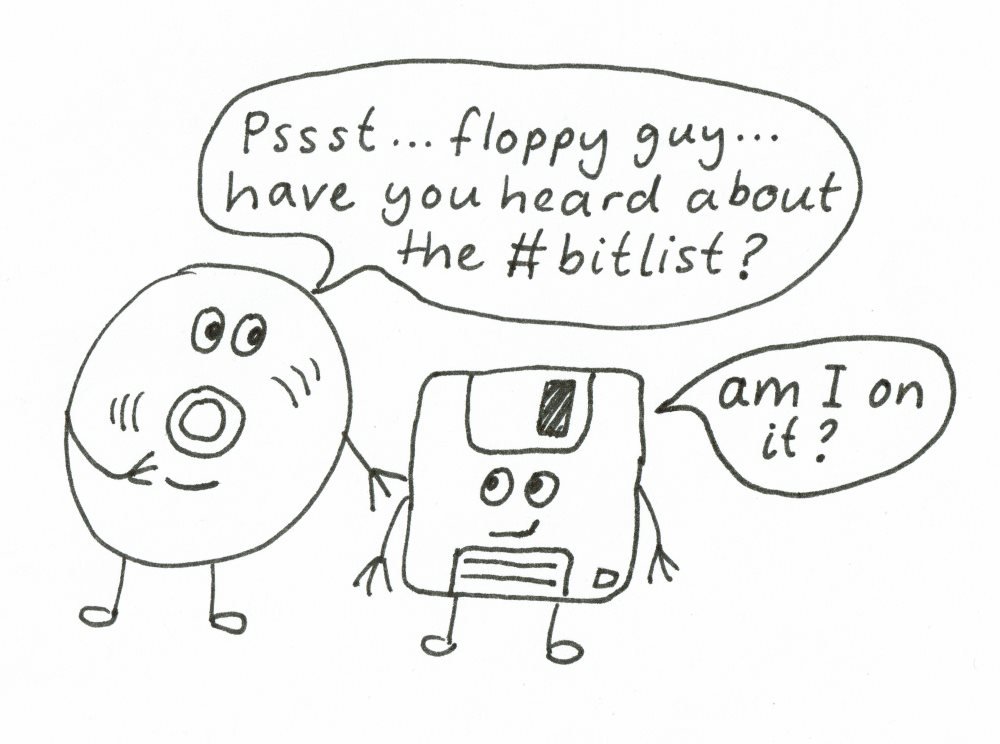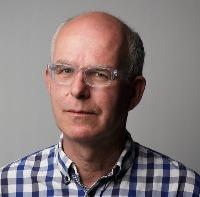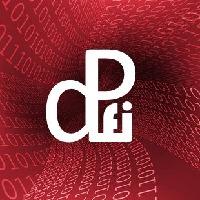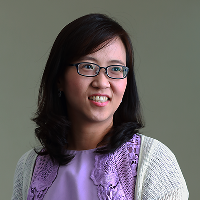DPC
NULLA DIES SINE LINEA …DIGITAL: What is and what is not digital preservation? Or the need for a few mantras
Isabel Bordes Cabrera es Jefe de Área de Biblioteca Digital, Biblioteca Digital Hispánica a la Biblioteca Nacional de Españaña / Isabel Bordes Cabrera is Head of Area at the Hispanic Digital Library at the National Library of Spain
Because of the world digital preservation day (#WDPD2018) we’ve wanted to take a break so to think and explain what is digital preservation, what is not and why this need arrived to memory institutions.
In our personal lives we've all experienced ourselves losses of digital data: that CD or USB with pictures of our last summer that won’t ever open again, that computer that can’t read DVDs; that wordperfect file which we cannot longer open nor edit, that corrupted file that cannot be recovered, that videogame we can no longer enjoy because we no longer have that commodore 64 which delighted us on those rainy evenings…The challenges of digital preservation have knocked everyone’s door, and not even NASA is an exception. Furthermore, NASA was one of the first institutions to react when they realized that almost all data from Viking probes were lost. And this was true even when they thought they had solved the problem back in the 90’s when they transferred data from the original magnetic tapes to CDs. And why was that? Because formats were not readable and the original programmers were either dead or had already left NASA. These facts put the machine to move and digital preservation turned into an undeniable challenge to all of us.
Preserving and providing access to digitally-born documentation
Frédéric Blin is Director for Heritage Collections, Preservation and Digitisation at the National University Library in Strasbourg, France
If all libraries are faced with providing access to digitally-born documentation, not all of them have the responsibility to preserve this documentation for the longer term. This is mainly the task of national libraries, or libraries bearing legal deposit responsibilities. International programmes and consortia have been created between libraries and publishers to keep academic resources secure, or between national libraries for the preservation of Internet. Academic libraries have been active in the field of research data preservation, in collaboration with institutional or shared data storage services.
For an autonomous medium-sized library, having the responsibility to preserve the regional heritage including the one coming through legal deposit, while at the same time trying to serve research needs based more and more on access to and use of digitised material, digital preservation is a question that tends to be at the back of the professional’s minds, leading however to no clear solution.
What we learned from Leren Preserveren
Frans Neggers is Digital Archivist at Het Nieuwe Instituut, and Project Manager and Trainer for Leren Preserveren
What should teaching heritage professionals about digital preservation be about? Autumn 2016 we - the Dutch Digital Heritage Network (DDHN) and Het Nieuwe Instituut (Rotterdam) - started developing Leren Preserveren (Learning Digital Preservation). We commissioned a professional to make a educational design. Decided was that it should become a blended learning environment for online students and with a group training. The target group was defined as practitioners that maybe don’t know too much yet about digital preservation or don’t know how to apply their knowledge. So it does not serve the more experienced practitioners who already know ‘how to’, nor the ones who are looking for answers to specific problems. Then all things to be learned had to be brought within a logical learning process. This resulted in a three module setup (learning to speak the language of digital preservation, becoming able to consider digital preservation in your own situation and learning to take the first steps). Important part of the group training were the module assignments as well as the expert sessions and exercises.
Digital Preservation and the Grand Gallery of IT Evolution
Eng Sengsavang is Reference Archivist for United Nations Educational, Scientific and Cultural Organization (UNESCO) in Paris, France
Last autumn, I moved to Paris to take on the role of Reference Archivist at the United Nations Educational, Scientific and Cultural Organization (UNESCO). My morning commute begins on a network of streets named after some of France and Europe’s prominent 18th-century naturalists. Rue Geoffroy Saint-Hilaire takes me past the Jardin des Plantes, site of the National Museum of Natural History (MNHN). The MNHN houses, among other displays, the Gallery of Evolution, an immense space exhibiting varieties of taxidermied animals. On the ground floor, an African elephant heads a procession forming the centerpiece of the ‘grand gallery,’ so-designated in French.
What if … your smartphone movies were suddenly all erased?
Brecht Declercq is Manager of Digitisation and Acquisition at VIAA, the Flemish Institute for Archiving in Belgium
There it is, lying next to you. Or maybe it is in your handbag or pocket. It may still be on your bedside table. Or your children are messing with it. Yesterday you used it to make some video clips. From your partner, your parents, your children, your BFF or just from the car before you. You probably didn’t think about it, but you documented your life in images and sounds. Some clips you erased quickly ... they better be not saved! Others are very valuable to you. Your 3-year-old granddaughter pressing a wet kiss on your camera lens. The champions celebration of the hockey team of a dear friend. Grandpa's voice at the birthday party ... three weeks before he died unexpectedly.
BitList 2018: The Global List of Digitally Endangered Species
 The 2018 Revision of The BitList offers a chance to update and review progress since initial publication in 2017. It was always intended as an interim statement that identified major changes or trends but offering commentary rather than a comprehensive review. It designed around the commitment that the DPC makes to the Digital Preservation Awards in alternate years, recognizing that the capacity for a full review would be limited in Autumn 2018. However, the pace of change is also relatively slow so the appetite and impact of an annual revision would be limited.
The 2018 Revision of The BitList offers a chance to update and review progress since initial publication in 2017. It was always intended as an interim statement that identified major changes or trends but offering commentary rather than a comprehensive review. It designed around the commitment that the DPC makes to the Digital Preservation Awards in alternate years, recognizing that the capacity for a full review would be limited in Autumn 2018. However, the pace of change is also relatively slow so the appetite and impact of an annual revision would be limited.
Authenticity of The Electronic Records: Presenting The Context
Özhan Sağlık is Lecturer at Bursa Uludag University in Turkey
This is my hard drive, and it only makes sense to put things in there that are useful. Really useful. Ordinary people fill their heads with all kinds of rubbish. That makes it hard to get at the stuff that matters. Do you see?" Sherlock Holmes, Season 1, Episode 3.
Archives are the banks of semantic capital (Floridi, 2018; Gollins, 2018) and we can ensure the intellectual control over this capital by context which is everything in digital archiving (Sheridan, 2018).
On the National Archives building of the United States it is written that “This building holds in trust the records of our national life and symbolizes our faith in the permanency of our national institutions” (National Archives and Records Administration, 2018). This sentence is valid for every country. Archives hold the trust for records whether they are physical or electronic.
Staying on Target: Reflections of a Digital Preservation Business Analyst
As Rosetta’s business analyst, I’ve always positioned myself on the receiving end of this blog. The ever-growing experience and different perspectives of digital preservation expressed in the stories shared here - and elsewhere - has significantly contributed to my ability to provide informed recommendations and decisions concerning the product’s roadmap and feature set. Therefore, when approached to contribute a post for this World Digital Preservation Day, I was ambivalent: My eagerness to contribute to this conversation seemed at odds with the product-oriented type of knowledge I can offer, which many would find uninteresting, if not inappropriate. After mulling over this for a while, I decided to share a recent dilemma I’ve been facing, with the hope that it will resonate well with the, er, designated community.
10 Years of Digital Preservation Collaboration in Finland
Heikki Helin is Senior Technology Coordinator for Digital Preservation Services at CSC - IT Center for Science Ltd in Espoo, Finland
Back in 2008, the National Digital Library of Finland (NDL) initiative was formed within the remit of the Ministry of Education and Culture of Finland. The initiative aimed at creating a nationally unified structure for contents and services ensuring the effective and high-quality management, dissemination, and especially digital preservation of cultural digital information resources. The basis for the NDL was formed by libraries, archives and museums (partner organisations).
In the early days of the NDL, it was decided that a centralized and shared digital preservation service should be created. It was estimated that common infrastructure and services reduces costs, increases system integration, strengthens cooperation, and brings the practices of partner organisations closer together. Besides technical solutions, the collaboration between partner organisations was an essential goal of the NDL.
Preserving digital anthropology resources at the Princess Maha Chakri Sirindhorn Anthropology Centre
Wachiraporn Klungthanaboon is Lecturer at Department of Library Science, Faculty of Arts, Chulalongkorn University and Sittisak Rungcharoensuksri is Researcher at the Princess Maha Chakri Sirindhorn Anthropology Centre
Learning the human behaviours and cultures in a particular community and time may not easily be done through the only lens of printed resources. The Princess Maha Chakri Sirindhorn Anthropology Centre (SAC), founded in 1991, is one of the most leading research centres in Thailand in the accountability of gathering and providing anthropological data to foster education and research in anthropology and archaeology in Thailand.
The SAC collaborates with local museums and communities across the country. The SAC has developed a digital platform for collecting, organizing, and disseminating gathered data and research output to the public with the aims of educating and preserving ritual practices, festivals, and other cultural expressions.








































































































































